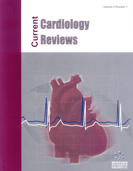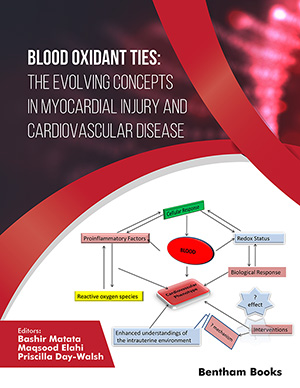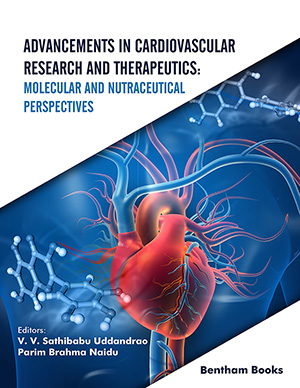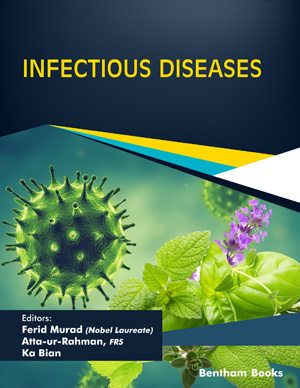Abstract
Nuchal translucency comprises a temporary accumulation of fluid in the subcutaneous tissue on the back of a fetus’s neck, which accompanies the crown-rump length and is observed through an ultrasound performed between 11 and 13 weeks + 6 days gestation. Nuchal translucency is considered to be above normal when values are higher than the 95th/99th percentile or equal to or higher than 2.5/3.5 mm. The first connection between increased nuchal translucency and the presence of congenital heart defects is described in the study of Hyett et al., who observed that they are directly proportional. Since that time, several studies have been conducted to understand if nuchal translucency measurements can be used for congenital heart defect screening in euploid fetuses. However, there is great variability in the estimated nuchal translucency cutoff values for congenital heart defect detection. The purpose of this review was to understand how increased nuchal translucency values and congenital heart defects are related and to identify which of these defects are more frequently associated with an increase in these values.
Keywords: Ultrasound, nuchal translucency, multifactorial etiology, congenital heart defect, adverse pregnancy outcome, normal karyotype.
[http://dx.doi.org/10.1080/14767050802676717] [PMID: 19479642]
[http://dx.doi.org/10.1080/01443615.2019.1621822] [PMID: 31416379]
[http://dx.doi.org/10.1002/uog.10059] [PMID: 21837766]
[http://dx.doi.org/10.1016/j.earlhumdev.2012.02.009] [PMID: 22482746]
[http://dx.doi.org/10.1002/pd.396] [PMID: 12224064]
[http://dx.doi.org/10.1016/S0029-7844(97)00658-3] [PMID: 9469277]
[http://dx.doi.org/10.1093/HUMREP/11.2.435] [PMID: 8671238]
[http://dx.doi.org/10.1016/S0301-5629(96)00202-5] [PMID: 9140175]
[http://dx.doi.org/10.1002/pd.2281] [PMID: 19399754]
[http://dx.doi.org/10.1002/pd.4586] [PMID: 25728762]
[http://dx.doi.org/10.1080/15513815.2019.1686787] [PMID: 31696754]
[http://dx.doi.org/10.3389/fcell.2022.949013] [PMID: 36111337]
[http://dx.doi.org/10.1080/14767058.2017.1408067] [PMID: 29157037]
[http://dx.doi.org/10.1016/j.ajog.2014.10.1102] [PMID: 25448520]
[http://dx.doi.org/10.1002/pd.2883] [PMID: 22028040]
[http://dx.doi.org/10.1055/s-0028-1109702] [PMID: 20094976]
[http://dx.doi.org/10.1097/01.AOG.0000267265.89831.c0] [PMID: 17540825]
[http://dx.doi.org/10.1016/0029-7844(95)00215-D] [PMID: 7675383]
[http://dx.doi.org/10.1002/uog.7534] [PMID: 20069678]
[http://dx.doi.org/10.1136/bmj.318.7176.81] [PMID: 9880278]
[http://dx.doi.org/10.1590/S0066-782X2006001600013] [PMID: 17057931]
[http://dx.doi.org/10.1016/S0301-2115(01)00528-0] [PMID: 11858885]
[http://dx.doi.org/10.1016/0029-7844(95)00310-N] [PMID: 7501355]
[http://dx.doi.org/10.1046/j.1469-0705.1995.05010006.x] [PMID: 7850594]
[http://dx.doi.org/10.1016/0143-4004(91)90008-4] [PMID: 1754575]
[http://dx.doi.org/10.1007/s00018-022-04377-0] [PMID: 35661923]
[http://dx.doi.org/10.1016/0167-5273(91)90359-W] [PMID: 1743790]
[http://dx.doi.org/10.1016/j.ajog.2004.12.093] [PMID: 15846173]
[http://dx.doi.org/10.1046/j.1469-0705.2000.00158.x] [PMID: 11084962]
[http://dx.doi.org/10.3389/fphys.2018.00373] [PMID: 29706899]
[http://dx.doi.org/10.1002/uog.137] [PMID: 12808669]
[http://dx.doi.org/10.1016/0029-7844(95)00486-6] [PMID: 8602299]
[http://dx.doi.org/10.1016/j.gene.2015.06.029] [PMID: 26074089]
[http://dx.doi.org/10.1017/S1047951105002039] [PMID: 16454872]
[http://dx.doi.org/10.1093/humupd/dmg008] [PMID: 12751779]
[http://dx.doi.org/10.1016/S1028-4559(10)60029-0] [PMID: 20708516]
[http://dx.doi.org/10.1093/oxfordjournals.humrep.a135845] [PMID: 8747070]
[http://dx.doi.org/10.1002/ca.22376] [PMID: 24488865]
[http://dx.doi.org/10.1159/000264483] [PMID: 9430206]
[http://dx.doi.org/10.1046/j.1469-0705.1998.12060380.x] [PMID: 9918085]
[http://dx.doi.org/10.1007/s00429-001-0214-9] [PMID: 11789987]
[http://dx.doi.org/10.1002/ajmg.1320330313] [PMID: 2801770]
[http://dx.doi.org/10.1002/pd.2316] [PMID: 19548265]
[http://dx.doi.org/10.1016/j.jsgi.2006.02.003] [PMID: 16638592]
[http://dx.doi.org/10.1007/s004290050123] [PMID: 9497154]
[http://dx.doi.org/10.1093/humrep/15.5.1155] [PMID: 10783369]
[http://dx.doi.org/10.1007/BF00300219] [PMID: 7954686]
[http://dx.doi.org/10.1046/j.1469-0705.2000.00132.x] [PMID: 11005124]
[http://dx.doi.org/10.1016/S0029-7844(97)89686-X] [PMID: 9397108]
[http://dx.doi.org/10.1016/S0140-6736(88)90174-2] [PMID: 2457141]
[http://dx.doi.org/10.1016/S0002-9378(85)80224-6] [PMID: 3923839]
[http://dx.doi.org/10.1111/j.1471-0528.1985.tb01446.x] [PMID: 2410012]
[http://dx.doi.org/10.1002/pd.121] [PMID: 11857609]
[http://dx.doi.org/10.1111/j.1471-0528.1999.tb08405.x] [PMID: 10453834]
[http://dx.doi.org/10.1111/j.1399-0004.2004.00332.x] [PMID: 15479188]
[http://dx.doi.org/10.1097/00001703-200104000-00012] [PMID: 11315872]
[http://dx.doi.org/10.1046/j.1469-0705.2001.00454.x] [PMID: 11489218]
[http://dx.doi.org/10.1016/S0140-6736(97)11280-6] [PMID: 9717920]
[http://dx.doi.org/10.7860/JCDR/2017/23755.9384] [PMID: 28511453]
[http://dx.doi.org/10.1016/S0020-7292(03)00206-6] [PMID: 14698823]
[http://dx.doi.org/10.1002/pd.721] [PMID: 14663835]
[http://dx.doi.org/10.1136/jmg.35.3.222] [PMID: 9541107]
[http://dx.doi.org/10.1038/jp.2008.14] [PMID: 18337744]
[http://dx.doi.org/10.1056/NEJMoa043693] [PMID: 16282175]
[http://dx.doi.org/10.1046/j.1469-0705.1999.13050366.x] [PMID: 10380305]
[http://dx.doi.org/10.1046/j.1469-0705.1999.13010067.x] [PMID: 10201090]
[http://dx.doi.org/10.1259/bjr.72.857.10505009] [PMID: 10505009]
[http://dx.doi.org/10.1046/j.1469-0705.2001.00341.x] [PMID: 11251915]
[http://dx.doi.org/10.1097/MD.0000000000007521] [PMID: 28723764]
[http://dx.doi.org/10.1046/j.1469-0705.2001.00483.x] [PMID: 11489217]
[http://dx.doi.org/10.1007/s00404-018-4790-9] [PMID: 29779040]
[http://dx.doi.org/10.1002/pd.321] [PMID: 12001183]
[http://dx.doi.org/10.1046/j.1469-0705.1998.11060407.x] [PMID: 9674086]
[http://dx.doi.org/10.1159/000506095] [PMID: 32036363]
[http://dx.doi.org/10.1046/j.1469-0705.2001.00481.x] [PMID: 11489219]
[http://dx.doi.org/10.1093/humrep/15.9.2008] [PMID: 10967005]
[http://dx.doi.org/10.1016/j.ajog.2004.06.081] [PMID: 15672008]
[http://dx.doi.org/10.1002/uog.12488] [PMID: 23606595]
[http://dx.doi.org/10.1067/S0002-9378(03)00645-8] [PMID: 14634564]
[http://dx.doi.org/10.1046/j.1469-0705.1998.11060401.x] [PMID: 9674085]
[http://dx.doi.org/10.1002/(SICI)1097-0223(199801)18:1<29::AID-PD213>3.0.CO;2-N] [PMID: 9483637]
[http://dx.doi.org/10.1111/j.1471-0528.1999.tb08109.x] [PMID: 10519427]
[http://dx.doi.org/10.1046/j.1469-0705.2001.00342.x] [PMID: 11251916]
[http://dx.doi.org/10.1097/AOG.0b013e31821aa720] [PMID: 21606749]
[http://dx.doi.org/10.1002/pd.3854] [PMID: 22517407]
[http://dx.doi.org/10.1002/uog.12349] [PMID: 23152003]
[http://dx.doi.org/10.3109/14767058.2012.703716] [PMID: 22712625]
[http://dx.doi.org/10.1002/pd.2831] [PMID: 21800333]
[http://dx.doi.org/10.7863/jum.2010.29.10.1445] [PMID: 20876898]
[http://dx.doi.org/10.1002/uog.7742] [PMID: 20617506]
[http://dx.doi.org/10.1002/uog.3948] [PMID: 17318942]
[http://dx.doi.org/10.1002/pd.1643] [PMID: 17238215]
[http://dx.doi.org/10.1002/uog.1025] [PMID: 15065182]
[http://dx.doi.org/10.1002/uog.51] [PMID: 12666217]
[http://dx.doi.org/10.1159/000095843] [PMID: 17003556]
[http://dx.doi.org/10.1016/j.ajog.2004.12.086] [PMID: 15902108]
[http://dx.doi.org/10.1111/j.1471-0528.2006.00951.x] [PMID: 16709210]
[http://dx.doi.org/10.3109/14767058.2013.784259] [PMID: 23488768]
[http://dx.doi.org/10.21037/qims-20-823] [PMID: 34249629]
[http://dx.doi.org/10.1161/CIRCULATIONAHA.115.020864] [PMID: 28143885]
[http://dx.doi.org/10.1002/pd.1985] [PMID: 18382996]
[http://dx.doi.org/10.1046/j.0960-7692.2001.00584.x] [PMID: 11844199]
[http://dx.doi.org/10.1186/1749-8090-8-S1-P83]
[http://dx.doi.org/10.34172/iejm.2019.10]
[http://dx.doi.org/10.1017/S1047951109990655] [PMID: 19638249]
[http://dx.doi.org/10.1002/uog.1936] [PMID: 15977311]
[http://dx.doi.org/10.1177/0969141315595826] [PMID: 26195563]





















